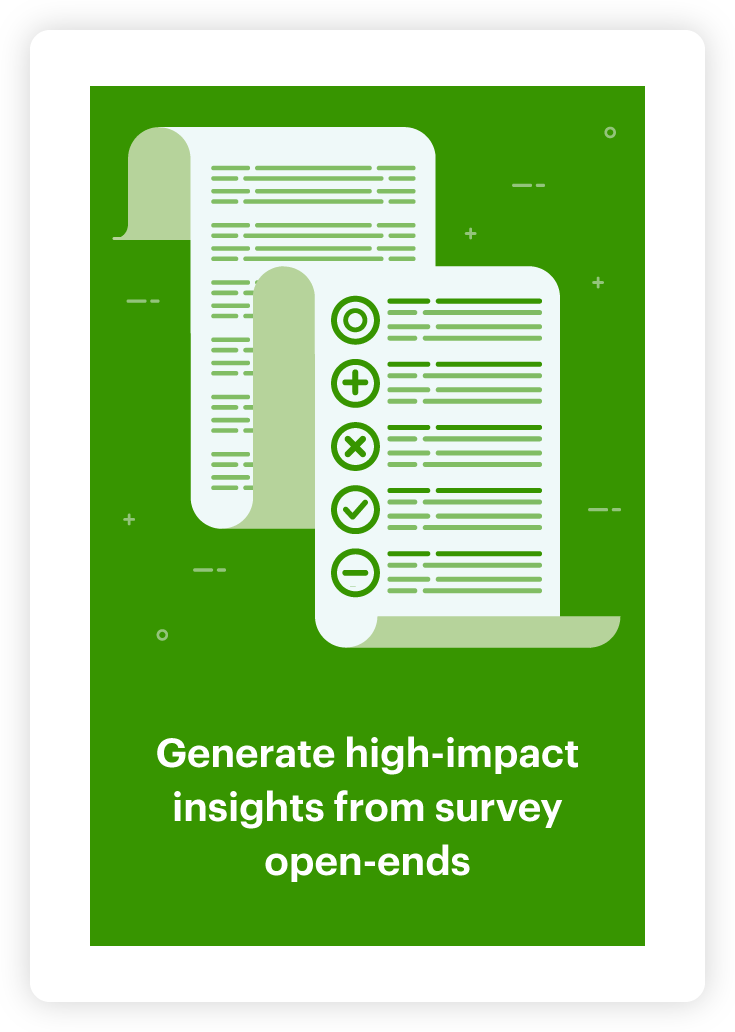Analyze customer feedback to boost NPS and revenue

In the complex tapestry of business metrics, net promoter score (NPS) stands out for its deceptively simple premise and profound implications.
At its core, NPS measures customer loyalty and propensity to recommend a business to others. Yet, beneath this surface lies a host of critical insights into customer satisfaction, company growth, and, critically, revenue potential.
However, a metric’s rise or fall tells only part of the story. The real narrative unfolds when businesses delve into the “why” behind these movements—a journey that can significantly impact a company’s bottom line.
The direct link between NPS and revenue
NPS acts as a barometer for customer sentiment, offering a glimpse into the future of your business’s health. A high NPS indicates satisfied customers likely to bring repeat business and generate word-of-mouth referrals—both key drivers of revenue.
Conversely, a low NPS signals dissatisfaction, portending potential churn and lost revenue opportunities. The stakes are high, with studies suggesting that a promoter is worth far more in revenue terms than a detractor, highlighting the direct correlation between NPS and financial success.
The cost of ignorance
Ignoring fluctuations in NPS can be perilous. Consider the tale of a hypothetical retailer, “ShopFast,” which noticed a gradual decline in its NPS but doesn’t understand the underlying causes.
This oversight led to increased customer churn, with ShopFast unaware that a cumbersome checkout process was to blame. The cost of acquiring new customers to replace those lost, coupled with the lost revenue from erstwhile loyal customers, significantly impacted ShopFast’s profitability.
This scenario underscores a critical truth: not knowing why your NPS moves can lead to a reactive business strategy, where companies scramble to stem losses instead of proactively enhancing customer satisfaction and loyalty.
Uncovering the “why” through text analytics
The key to unlocking the mysteries behind NPS lies in text analytics. By analyzing customer feedback in-depth, businesses can uncover specific pain points, desires, and required recommendations. This process transforms qualitative feedback into actionable insights, allowing companies to address issues directly impacting customer satisfaction and, by extension, revenue.
Take the example of a clothing brand that utilized text analytics to analyze NPS responses. It discovered that a significant number of detractors mentioned sustainability concerns.
By addressing these concerns and communicating their efforts more effectively, the brand not only improved its NPS but also saw an uptick in customer loyalty and sales, illustrating the tangible benefits of understanding and acting on NPS feedback.
Turning “why” into action
Understanding the “why” behind NPS movements empowers businesses to make strategic improvements that resonate with their customer base. It’s about closing the loop, where feedback leads to action, which in turn is reflected in improved NPS scores and, importantly, revenue growth.
Strategic improvements can range from product enhancements to overhauling customer service practices. The key is to align these changes with customer feedback, ensuring that the company’s actions directly address their concerns and desires.
Moreover, by continuously monitoring NPS and the insights derived from it, businesses can measure the impact of their actions on customer satisfaction in real time. This feedback loop creates a culture of continuous improvement, where every decision is informed by customer insights, driving both satisfaction and revenue.
The value of continuous NPS management
Navigating the intricate relationship between NPS and revenue requires more than just tracking a score—it demands a deep dive into the reasons behind customer sentiment. In today’s competitive landscape, understanding and addressing the “why” behind NPS movements isn’t just good practice; it’s a strategic imperative for revenue growth and customer-centric innovation.
Businesses like the clothing brand exemplify the power of turning NPS feedback into action, demonstrating that the path to enhanced profitability is paved with the insights gathered from understanding customer feedback.
By investing in tools and strategies that unlock these insights, companies can not only improve their NPS but also solidify their financial footing in a market that values customer satisfaction as a primary indicator of success.
Analyzing customer feedback to boost NPS and revenue
As you reflect on your company’s approach to NPS, consider the untapped potential of understanding the nuanced feedback behind each score. The journey from data to insight to action is not just about improving a metric — it’s about fostering a deep connection with your customers that, in turn, drives revenue and growth.
By making the leap from numbers to nuanced understanding, your business can turn customer loyalty into a competitive advantage, ensuring that every score, every piece of feedback, contributes to a story of success.
Relative Insight enables you to transform your NPS feedback into a strategic asset. Speak to me, or one of our other text analysis experts, to find out how we can decode your customer feedback and unlock revenue potential.
